THIS POST MAY CONTAIN AFFILIATE LINKS FOR WHICH WE'LL RECEIVE A COMMISSION IF YOU CHOOSE TO SHOP THROUGH THE LINKS. PLEASE READ OUR DISCLOSURE FOR MORE INFO.
When my husband and I were first thinking about marriage, we embarked on the journey of finding an engagement ring together. We scoured the internet researching everything we could about diamonds. We learned everything about color, clarity, cut, and carat size (the “4 Cs”). We debated the advantages and disadvantages of particular metals for the ring setting. We researched jewelers and their reputations. We wanted to get the best possible deal we could find.
The process was quite arduous and time-consuming, but ultimately we found a diamond we both loved and felt was a good value. Fast forward ten years and I see couples going through a similar process when selecting a diamond engagement ring. But couples today have even more options.
Namely, I’ve recently learned that couples today have the option of purchasing “lab-created” or “lab-grown” diamonds. The introduction of lab diamonds into the jewelry market has definitely shaken things up and caused quite the debate among jewelers. The lab-grown diamonds versus real diamonds debate is still alive and well, so I wanted to do my own research to better understand this new option for engaged couples.

What are lab-created diamonds?
If you’re like me, you’re wondering exactly what are lab-created diamonds? The first time I heard about them, I automatically assumed they were fake or simulated diamonds--and you know your girl does not do fake!
But nothing could be farther from the truth. Lab-created diamonds are real diamonds. These man-made diamonds are “grown” inside a lab using technology that mimics what happens in the earth when a natural diamond is formed. Thus, the only thing that makes a lab-created diamond different from a natural diamond is its origin.
The result is a diamond that is chemically, physically, and optically the same as those grown beneath the earth’s surface. Additionally, lab-created diamonds are graded and certified using the same process as mined diamonds. Finally, lab-grown diamonds are evaluated with the same color, clarity, cut, and carat size (the “4 Cs”) and can be found in all the similar shapes (e.g., round, emerald, brilliant, princess, etc.) as naturally-mined diamonds.
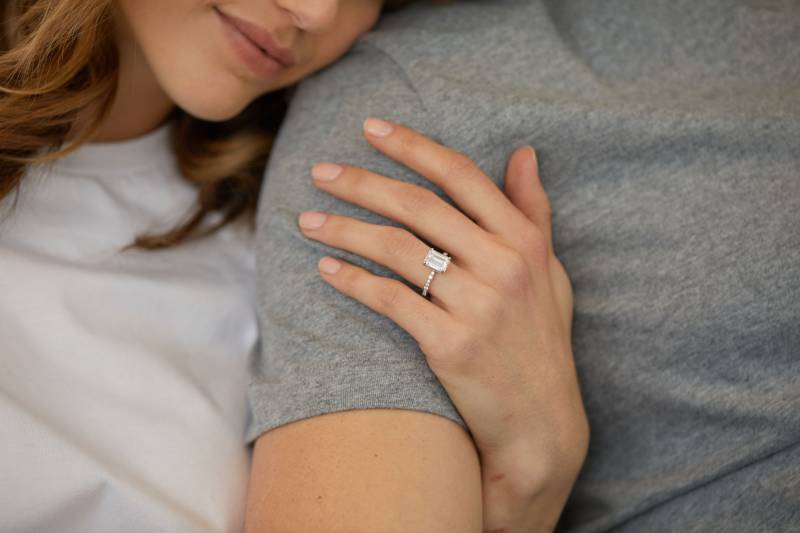
How are lab-created diamonds made?
To understand how lab-created diamonds are made, you first need to understand how naturally-mined diamonds are created. Natural diamonds are formed when pure carbon undergoes extremely high temperature and pressure over billions of years beneath the earth’s surface. Centuries of ground movement bring the diamonds to the earth’s surface embedded in large chunks of rock. Miners excavate these gems from the rocks and collect these natural diamonds for sale to the public.
Like naturally-mined diamonds, the process for lab-grown diamonds starts by putting carbon under extreme heat and pressure. Labs take a single carbon “seed” (a small sliver of a natural diamond or lab-created diamond) and take it through a process that mimics the earth’s natural process for creating diamonds. Using one of two processes, High Pressure High Temperature (HPHT) or Chemical Vapor Deposition (CVD), the carbon seed slowly forms into a crystalline structure. Through these advanced technologies, labs are able to “grow” diamonds that are chemically, physically, and optically the same as naturally-mined diamonds.
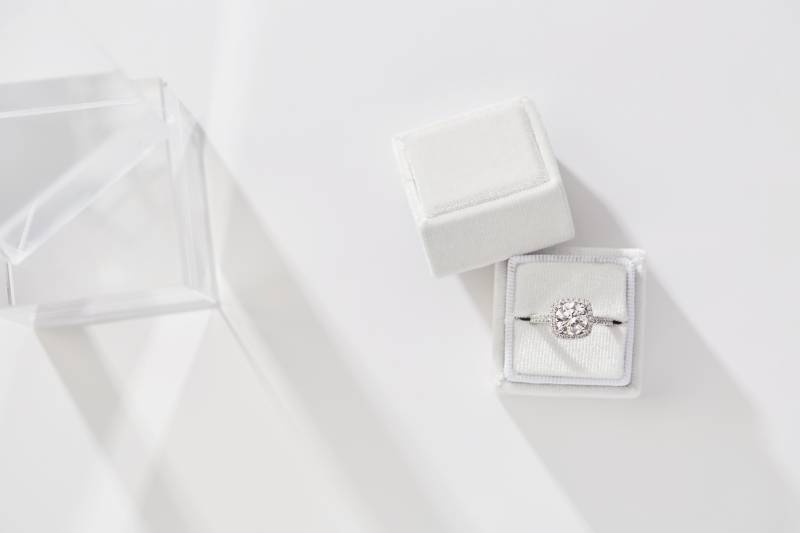
Can you tell if a diamond is lab-created?
Lab-created diamonds are virtually indistinguishable from natural diamonds. The untrained eye (i.e., your nosy best friend) will never be able to tell if you’re wearing a man-made diamond. Even most jewelers cannot tell the difference without specific testing. To make sure that lab-grown diamonds are not mixed up with natural diamonds, jewelers are required to label lab-created diamonds with laser inscriptions on the diamond’s girdle, the outermost edge.
How are lab-created diamonds different from diamond simulants?
You may be wondering how lab-created diamonds are different from diamond simulants, like cubic zirconia, white sapphire, and moissanite. Diamond simulants are comprised of a proprietary blend of elements that simulate the look, weight, and wear of a diamond but are chemically distinct. Whereas, lab-grown diamonds have all of the same properties of their natural counterparts and are “real” in every sense of the word.
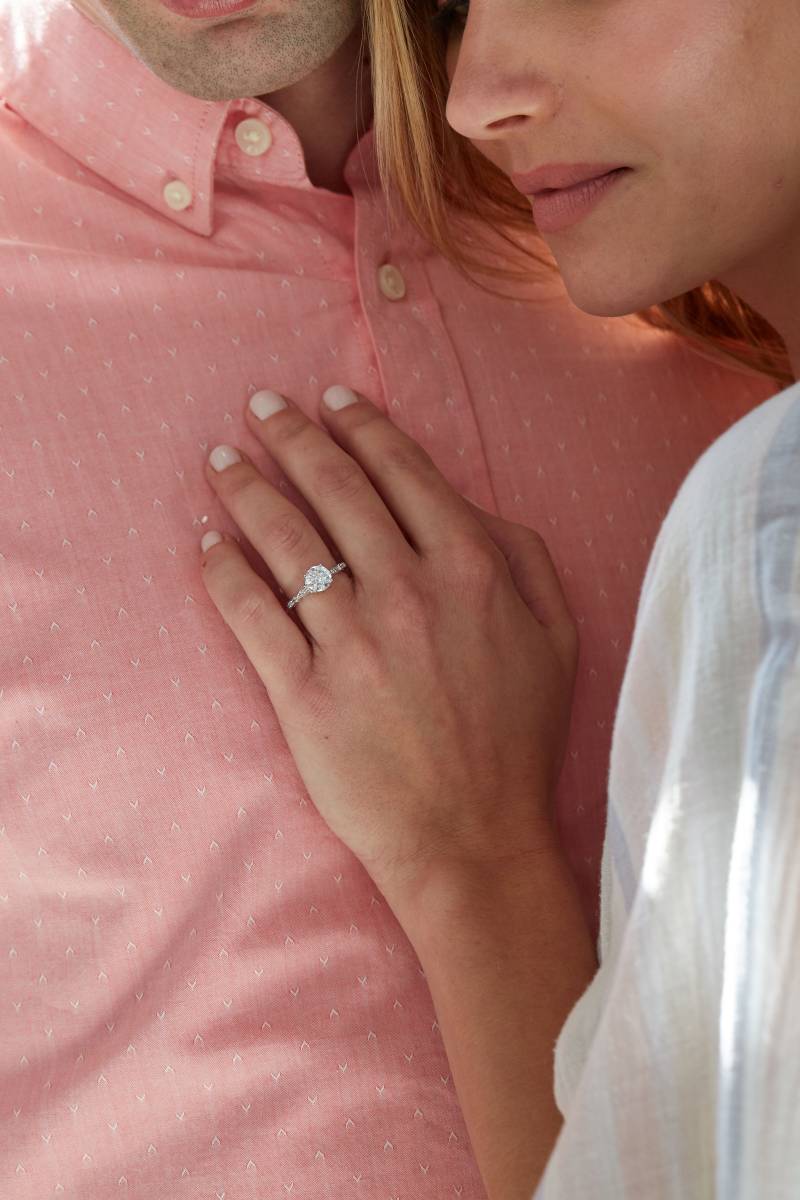
Advantages of lab-created diamonds
So now that we know that lab-created diamonds are the real thing, let’s talk about what benefits they have over mined diamonds.
Eco Friendly - Lab-created diamonds do not disturb any land surfaces. Additionally, lab-grown diamonds do not produce any mineral waste.
Ethically Sourced - Lab-created diamonds are conflict-free. Diamond miners are never harmed or exploited during the making of lab-grown diamonds. Thus, there are never any issues that you’re purchasing a “blood diamond.”
Competitively Priced - Lab-grown diamonds typically cost 20-40% less than mined diamonds due to a shorter supply chain.
Disadvantages of lab-created diamonds
While man-made diamonds are technically real diamonds, they do have disadvantages when compared to natural diamonds.
Rarity - Because lab-created diamonds are manufactured, they can be mass-produced. Thus, your diamond will not be a “one-of-a-kind” as is the case with those diamonds mined from the earth’s surface.
Value - Man-made diamonds are new to the jewelry industry. Thus, the long-term value of lab-grown diamonds is not yet settled. As they continue to take up market share in the diamond industry, advancements in lab-grown diamond technologies could lower the value of previously sold lab-created diamonds. While naturally-mined diamonds typically increase in value over time, the lab-created diamond you buy today could be worth considerably less a year from now.
The uncertainty of the value of lab-created diamonds makes their resale value questionable. However, the value of naturally-mined diamonds stays fairly consistent and thus, are, at this point, a more stable investment.
To help you compare the similarities and differences as well as the pros and cons of lab-created diamonds versus “real” diamonds, we’ve created this handy-dandy chart:
Lab-Created Diamonds | Naturally-Mined Diamonds |
Similarities | |
Constructed of carbon atoms structures | Constructed of carbon atoms structures |
Available in a range of shapes and carat weight | Available in a range of shapes and carat weight |
Differences | |
Created in a lab in a matter of weeks | Formed under the earth’s surface over billions of years |
Mass-produced | One-of-a-kind |
Priced 20-40% lower than naturally-mined diamonds | Priced up to 40% higher than similar lab-created diamonds |
Decrease in value over time | Increase in value over time |
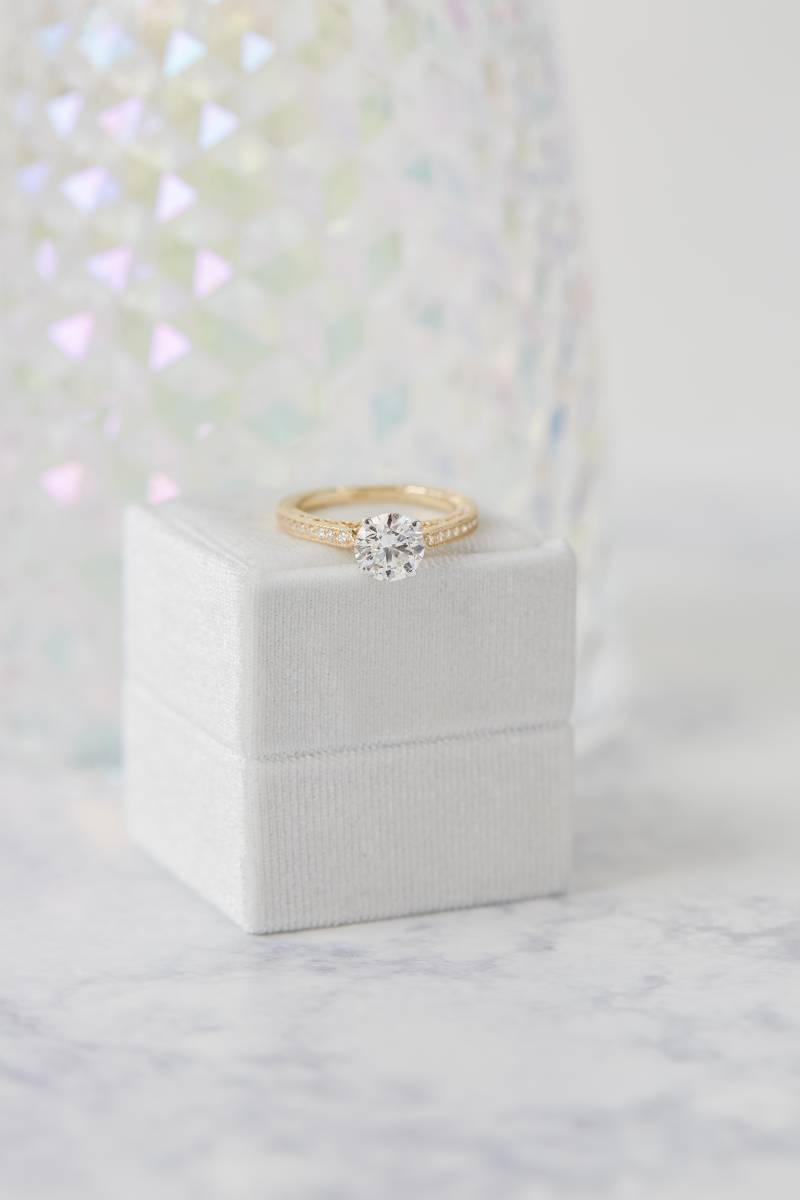
Where can I buy a lab-created diamond?
Considering all of this, if you’re looking to get your hands on one, you have few options. More and more jewelers (some established, some new) are getting into the lab-grown diamond market. With these types of diamonds being new to the jewelry industry, it can be tough deciphering which lab-grown diamond companies are quality.
Clean Origin stands above the competition because of its commitment to quality and its unbelievable features. As third-generation jewelers, the founders know a thing or two about the industry and pass on that knowledge to the customer in terms of competitive pricing and benefits.
In addition to offering stunning lab-created diamonds, the company offers the following to all of its customers:
Free shipping
100-day return policy
Lifetime manufacturing warranty
Independently certified diamonds
Free resizing
Phone and email support
With all of these features and a 100-day return policy, you really have nothing to lose.
Buying a diamond engagement ring is a complicated decision-making process. And the process of purchasing a lab-created diamond engagement ring can add additional wrinkles to that process. So make sure you do proper research and choose a reputable lab-grown diamond company. Clean Origin is definitely one to look into.
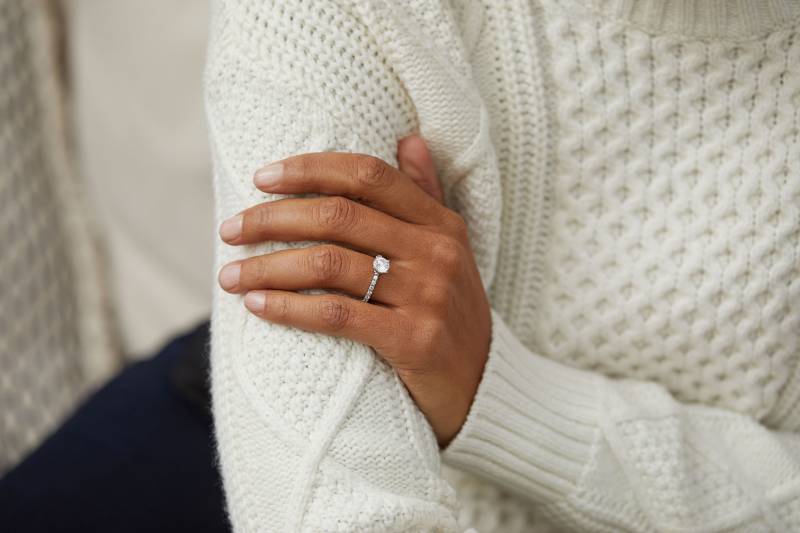
Buying a diamond engagement ring is a complicated decision-making process. And the process of purchasing a lab-created diamond engagement ring can add additional wrinkles to that process. So make sure you do proper research and choose a reputable lab-grown diamond company. Clean Origin is definitely one to look into.
_________________
If you like the information in this article, be sure to sign up for our email list where you'll get access to our newsletters that are choc-full of helpful wedding advice and tips. And be sure to follow us on Instagram, Facebook, and Pinterest for cool giveaways and special vendor discounts. Finally, we're always looking for new and inventive ways to help our readers, so share your best wedding tips/planning advice in the comments. We may just turn your comment into an informative article!
This is a sponsored conversation written by me on behalf of Clean Origin. The opinions and text are all mine.
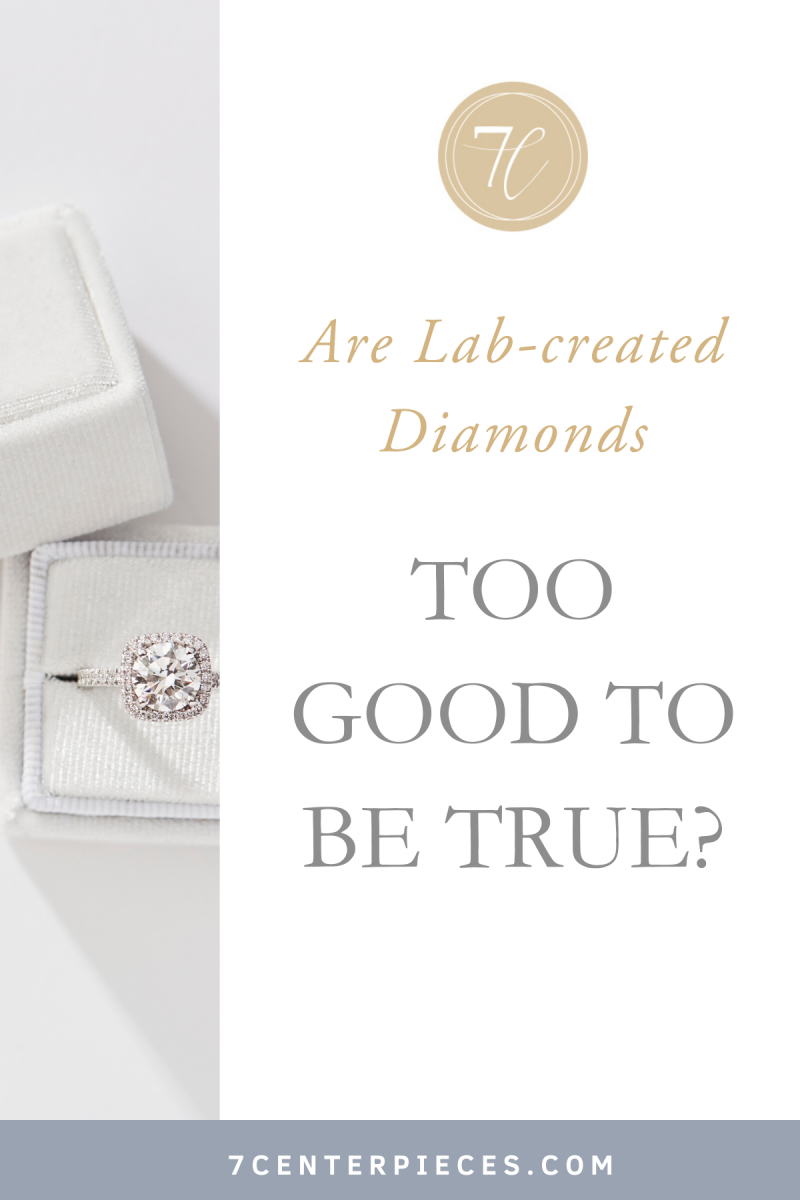












Leave a Comment
Comments (12)
Thanks for posting an amazing blog about the lab-grown diamond. I read the complete blog and I totally agree with you that these man-made diamonds are "grown" inside a lab using technology that mimics what happens in the earth when a natural diamond is formed. Thus, the only thing that makes a lab-created diamond different from a natural diamond is its origin, and I also heard somewhere that Smiling Rocks is also a great source for this type of diamond.Once again thanks for the wonderful information. Keep posting such types of blogs.
Great article!! It was great learning about lab grown diamond and how they are similar to ethically sourced diamonds. Thank you for sharing the article. It was useful.
Very Useful post. Keep it up good posts.Thank You!
Thank you for providing us with such a wonderful article. Thanks and keep sharing.
Thank you for providing us with such a wonderful article about lab grown diamond. Thanks and keep sharing.
Yes, lab created diamonds are certainly game changers. I love diamond jewelry but cannot afford mined diamonds. My favorite cut, heart shape is so rare and price is prohibitive. I just purchased a 1.13 carat heart shape from Ritani and my jeweller says it is beautiful.
Nice post
OMG! Such a great & lovely diamond ring this very helpful and informative blog thanks
Thank you for shedding light on the topic of lab-created diamonds! As someone who values sustainability and ethical practices, I find lab-grown diamonds to be an exciting and promising alternative to mined diamonds. The fact that they have the same chemical and physical properties as natural diamonds is truly remarkable. It's great to see technology advancing in a way that offers consumers a guilt-free option when it comes to purchasing beautiful and sparkling diamond jewelry.
Thank you for providing this information. A sustainable diamond is one that has been ethically sourced, such as one created in a lab using environmentally friendly methods or one that has been reused, reset, or resized. If someone requires additional information on this subject, they can additionally reach us at https://etikajewels.com/are-lab-grown-diamonds-more-sustainable-answered/
Thank you for publishing this thought-provoking blog post. I appreciate the balanced perspective you presented. Your post was truly informative and insightful, and I enjoyed reading it. Great work!
Thanks for the Informative blog I found your blog and https://dreamdiamonds.com.au/ blog very informative keep posting.